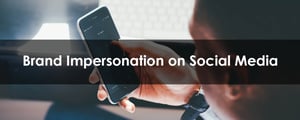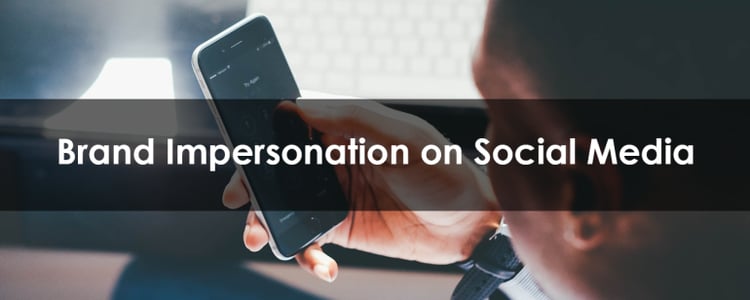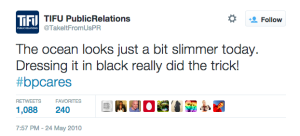
Brand Impersonation on Social Media – Its Forms and Its Threats

Brand impersonation takes place when an impostor creates a page or an account on social media pretending to be a brand, using the account to gain confidence of trusting consumers or to conduct other activities that harm the targeted brand. This is an increasingly common problem on social media that thousands of brands are forced to deal with each day.
Facebook’s annual report in 2014 revealed that fake accounts make up 5.5 – 11.2 percent of its monthly active users. The difference between 5.5 and 11.2 percent (equivalent to 70.11 million accounts at the time) is a wide range in estimation, showing that Facebook struggles to figure out which accounts are real and which aren’t.
Until social media platforms can find a way to efficiently track and delete fake accounts, brands need to themselves actively identify brand impersonation in order to protect their brand reputation and to prevent undesired financial losses to themselves and their customers and fans.
How does brand impersonation happen and what are the associated threats?
Brandjacking
The term brandjacking refers to the act of a person assuming the online identity of a company. For example on Facebook, anyone can set up a page with almost any type of name and if a page or a profile is created by using a brand’s trademark protected material in the profile picture and/or having a similar page name it may be hard to identify that it is not the real brand. Brandjacking on Facebook usually happens through a fake profile commenting on the real brand’s page answering customer questions tricking users into believing that it is the actual page responding.
On Twitter, a fake account may tweet on behalf of a brand and use hashtags related to the brand. As social media feeds move fast and people rarely have time to look into things in more detail, consumers may have a hard time differentiating between real and fake accounts and may perceive messages from a fake account to be official.
THREATS: Brandjacking means a brand's trademark and identity is mimicked to deceive the recipient. When a person abuses a company brand especially for a longer period of time, it will undoubtedly raise the question of the effectiveness of the business in general. Last August, the case of a man posing as a Target customer service rep on the brand’s Facebook page went viral. Under the name Ask ForHelp, with a bulls-eye profile pic (Target’s logo), this man sarcastically replied to around 50 posts and it took around 16 hours until the fake account was subsequently shut down.
If brandjacking comments are inappropriate it can severely harm brand reputation. For example, @BPglobalPR is not an official voice of BP on Twitter, but it was set up during the 2010 Deepwater Horizon oil spill to satirize and criticize the situation. One of this fake profile's tweets that went viral read: “The ocean looks just a bit slimmer today. Dressing it in black really did the trick! #bpcares”. By following the trend, the fraudulent account attracted more followers than the real BP account did (200,000 followers for the fake BP account versus 20,000 followers on the real one). While BP was dealing with this disastrous crisis, this act of brand impersonation did add oil to the fire burning BP’s reputation.

The screenshot was taken Oct 2015, @BPglobalPR has changed its name since then.
Phishing and scamming
Another type of brand impersonation is an impersonating account running fake campaigns to phish and scam customers on a brand’s Facebook page. For example, a new page may be put called something similar to the brand such as “Clash of Clans – Free coins” or “Farmville – tips and tricks”. People may think that the page is official and therefore tied to the actual page, even though the page is set up to scam users.
Another example was the 2011 case in which the online auction site Grabswag.com stole the shopping site Dealzon’s brand identity and posted fake spam ads on Facebook. Anyone that clicked on the ad was directed to Grabswag’s site.
THREATS: Customers who accidentally take part in phishing campaigns have to fill in their account details to participate or click on a link leading to malware, which results in their accounts being hacked. A major risk for brands whose customers fall victim to phishing attacks is that those customers will associate financial or personal information loss with the impersonated brand – affecting not only the real brand's reputation and trust, but also inhibiting future sales.
In the case of Dealzon above, the company was flooded with hate mail from angry customers. According to a Cloudmark survey, customers are 42 percent less likely to do business with a brand if they are targeted by a phishing attack impersonating that brand.
The need for monitoring your brand on social media
On social media, it is relatively easy for impostors to impersonate a brand. One of the most important aspects of any social media strategy is to prevent the misuse of a brand and to stop impostors from fooling your customers and engaging with them. Consistent tracking of impersonating accounts is necessary to make sure that fake pages are not infringing on a brand’s properties.